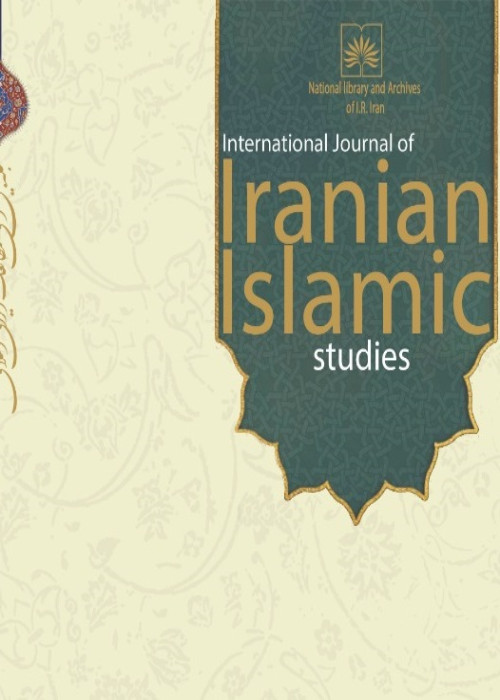Tazkira's " Thamarat al -Quds men Shajarat al-uns." and its unknown information in the field of mystical literature
Author(s):
Article Type:
Research/Original Article (بدون رتبه معتبر)
Abstract:
An important and valuable Tazkira is "Thamarat al -Quds men Shajarat al-uns" written by Mirza Lal Baig Lali Badakhshi. (1022-968).In this tazkira, the name of a total of 594 famous mystics who were effective in the Indian subcontinent are listed.He completed the information in "Nafahat al-uns min hadarat al-quds" Jami's book, and this book fills the lack of information on mystics after Jami's period. The author of this tazkira has used many sources and famous and not famous tazkira to write the book and for this reason, this tazkira is one of the richest books that contains the biographies of Muslim mystics during the period of Timurid Government in India.In this period according to the peak of the flourishing of Persian literature and the strong connection of Indian Muslim mystics with the Persian language, transferring and recording the poems and mentioning the works of these mystics in such a book, has preserved and recorded a part of the history of Persian literature that had been neglected. This article wants to answer these questions: how the Persian language is reflected in this book and to answer the question, what are the characteristics of Samrat al-Quds's prose? What are the historical-literary values in the book "Thamarat al-Quds"? What are the names of the works that appear in "Thamarat al -Quds men Shajarat al-uns"? IntroductionThis book is a description of the lives and works of nearly six hundred Muslim mystics who lived in the Indian subcontinent. Both those who lived there and those who spent part of their lives there. This book is the final part of a book written a century ago by Abd al-Rahman Jami (817-897 AH) in "Nafahat al-uns min hadarat al-quds". The author of this book is Mirza Lal Beg, Lali Badakhshi.The proofreader of this version is Seyed Kamal Haj Seyed Javadi, who introduced it in two full introductions.He has made references to Islamic mysticism in that country, and at the same time, he has introduced Sufism dynasties in the sub-continent, and about the introduction of the dynasties of"Suhrvardiyyah","Chishtiyyah","Qadiriyyah","Naqshbandiyyah", and "Kubruyyah". ,"Noorbakhshiyeh", "Nemat Allahyeh" and... have brought appropriate materials and also pointed to the prosperity of Sufism in the subcontinent. Material & Methods Because this tazkira is one of the richest books that includes the biographies of Muslim mystics during the Timurid rule of India and also contains important information about the spread of Islamic mysticism during the glorious era of Akbar Shah and his son Jahangir Shah, considering the peak of Persian literary prosperity In this period and the connection of Indian Muslim mystics with the Persian language, this article wants to explain how the Persian language is reflected in this book and answer the question, what are the characteristics of the prose of "Thamarat al -Quds men Shajarat al-uns"? And what are the historical-literary values in this book? What are the names of the works that appear in Al-Thamrat al-Quds? Discussion of Results & Conclusions Preliminary studies showed that because the author of this tazkira, namely Mirza Lal Bey, Lali Badakhshi, has made many trips to different lands, he has seen and used many old sources and famous and not famous tazkira in his time. This tazkira is one of the richest books that contains the biographies of Muslim mystics during the period of Timurid rule in India. The studies showed that due to the author's access to the quotes and information from some tazkira books and letters and the inclusion of many names, his book is very rich. Examining the names and signs of some of these books gives the reader the confidence that Samrat al-Quds by Lali Badakhshi is a kind of collection of all the sayings and circumstances that have been written about the mystics of the Indian subcontinent until the time of this author. The investigations showed that the author's information about the prevalence of various mysticisms during the glorious era of Akbar Shah and his son Jahangir Shah has provided the riches of Persian literature. The research showed that the author of this book was able to reflect an important part of the peak of the flourishing of Persian literature in this period, and through the inclusion of poems, he was able to represent the strong connection between Indian Muslim mystics and the Persian language. By quoting poems and mentioning the works of Muslim mystics in such a work, the author has kept a neglected part of the history of Persian literature from being lost.
Keywords:
Language:
Persian
Published:
Journal of Iranian Islamic Studies, Volume:12 Issue: 3, 2022
Pages:
105 to 121
magiran.com/p2622102
دانلود و مطالعه متن این مقاله با یکی از روشهای زیر امکان پذیر است:
اشتراک شخصی
با عضویت و پرداخت آنلاین حق اشتراک یکساله به مبلغ 1,390,000ريال میتوانید 70 عنوان مطلب دانلود کنید!
اشتراک سازمانی
به کتابخانه دانشگاه یا محل کار خود پیشنهاد کنید تا اشتراک سازمانی این پایگاه را برای دسترسی نامحدود همه کاربران به متن مطالب تهیه نمایند!
توجه!
- حق عضویت دریافتی صرف حمایت از نشریات عضو و نگهداری، تکمیل و توسعه مگیران میشود.
- پرداخت حق اشتراک و دانلود مقالات اجازه بازنشر آن در سایر رسانههای چاپی و دیجیتال را به کاربر نمیدهد.
In order to view content subscription is required
Personal subscription
Subscribe magiran.com for 70 € euros via PayPal and download 70 articles during a year.
Organization subscription
Please contact us to subscribe your university or library for unlimited access!



